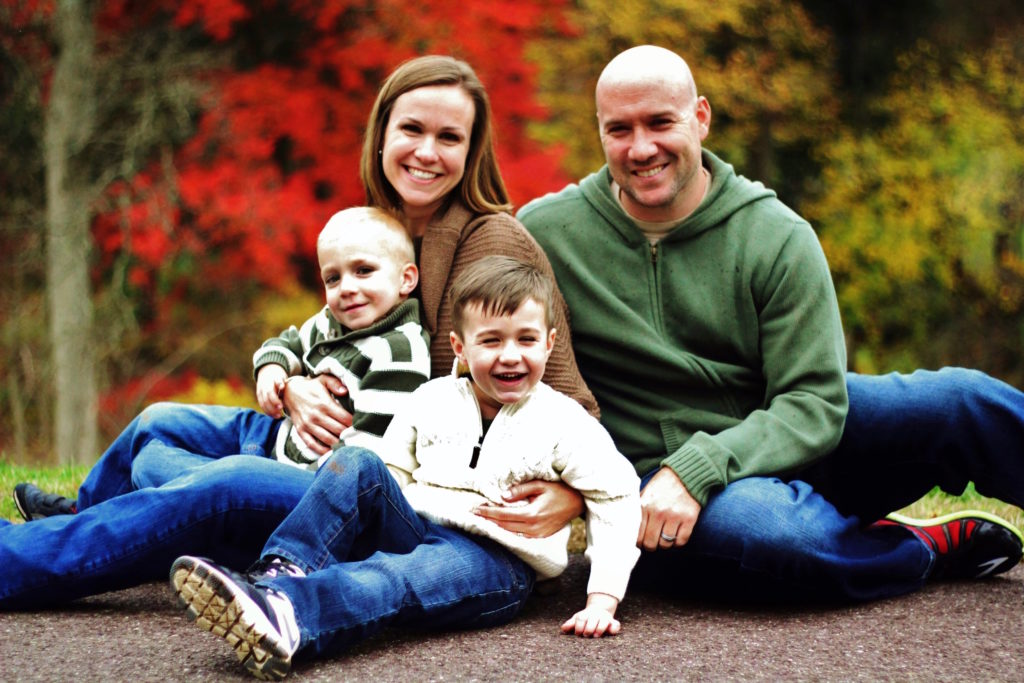It’s 10 a.m. on a Saturday morning, but Kyleen Douglas has been up since 6 a.m. the day before. Her daughter, Kailyn, 8, hasn’t slept either. Kailyn has CLN1 disease (Batten disease). When she was first diagnosed two years ago, she didn’t have any mobility or vision issues, but her symptoms progressed, including loss of speech and motor function and sleep disruption.

“The day isn’t carefree anymore,” Kyleen said. “Between worrying about getting Kailyn to school or physical therapy, tracking her moods and her sleep, making sure she’s taken her medicine, watching her to see if that stare is a normal stare or a silent seizure, there isn’t a moment to breathe or be calm.”
Joe Coyne’s son Garrett, 9, also suffers from CLN1 disease. Diagnosed at age 4, Garrett now requires constant care.
“It’s not easy,” Joe said. “Twenty-four-hour care is 24-hour care. We get up early with Garrett, change and feed him. We move him from an activity chair to a wheelchair, and eventually get him to school for a few hours. One of us has to be home when he gets out, and then we change him and feed him. Nancy and I rotate nights sleeping with Garrett to monitor if his feeding tube comes out or if he’s struggling to sleep.”

Kailyn and Garrett have aides who visit during the week, giving their parents and siblings a chance to take a break, grab groceries, clean or spend time with their other children.
“We have an aide who comes a few days a week for just a couple of hours, but it gives me a chance to sit with Keeleigh and do homework or run out for an errand,” Kyleen said.
“I never understood why families with disabilities disappear, but the difficulties of traveling or even just getting out in the community can be overwhelming,” Joe echoed. “Trying to leave the house for the grocery store isn’t a quick trip anymore.”
Both Joe and Kyleen feel the same way: exhausted. Not only do they spend most of their time caring for their children, they have the added pressure of trying to keep ahead of CLN1 disease as it progresses. Without a clear roadmap, they’re left to deal with problems as they arise, searching for the appropriate specialist, therapist or piece of equipment. They say a clinical care strategy could change that.
“A lot of people I interact with say, ‘I don’t know how you do it.’ But what else would I do?” Kyleen said. “You either give up, or you figure it out. Having a care strategy would not have given us any time back, but it would have changed how we spent that time — with Kailyn.”
“Having a care strategy would relieve a massive amount of stress,” Joe said. “Sometimes it can take months to resolve an issue, but if we knew how to address things before they arose, it would help. It would give you best practices, talking points with your doctor, so that you could spend less time researching and more time focusing on the things that are important, like your kid and your family. You can try to have as normal of an unnormal family as you’ll ever have.”
Currently, no such resource exists, leaving families like Joe’s and Kyleen’s to search the internet for limited, disheartening information. Dr. Susan Shaffner, a general pediatrician in Charlotte, North Carolina, supports the development of protocols for doctors, patients and families for CLN1 disease and other rare diseases.
“Forming care strategies is so important for patients, parents and physicians,” Shaffner said. “Right now, it’s a matter of seeking out a specialist as issues arise, which isn’t proactive and can be time-consuming for doctors and parents. With other common disorders, there is a protocol, a template you go through — you get tests at certain ages or milestones, you can go to multidisciplinary clinics to see all of your specialists in one place. This is what we need to see for rare diseases as well, especially those like Batten.”
In May, Taylor’s Tale brought together a multidisciplinary team from around the globe to discuss clinical care strategies for CLN1 disease. Arming doctors and parents with information and actionable steps can drive lasting change over time for families like the Douglases and the Coynes. Stay tuned for more.
